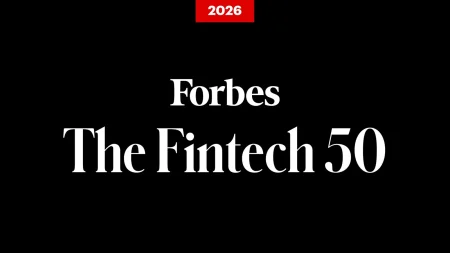Ripple’s Remarkable Transformation from Crypto Question Mark to Financial Powerhouse
In an extraordinary reversal of fortune, Ripple—once criticized as a “zombie blockchain” with more market value than actual utility—is rapidly evolving into a legitimate financial powerhouse. Earlier this year, Ripple stood as the poster child for speculation-driven crypto projects, boasting a $36 billion market cap but generating minimal actual revenue from its blockchain technology. The company had spent years pursuing its vision of replacing SWIFT for global banking transactions, but with annual fees of just $583,000, critics rightfully questioned whether Ripple represented substance or simply speculation. The shadow of a lengthy SEC lawsuit further complicated its path forward, with regulators alleging XRP tokens constituted unregistered securities. However, the resolution of this legal battle in 2023 (with Ripple paying a $125 million fine) has unleashed a remarkable transformation that’s reshaping both the company and the broader financial landscape.
Since shaking off its regulatory troubles, Ripple has embarked on an aggressive acquisition strategy that signals serious ambitions beyond its original blockchain focus. Private market valuation of Ripple shares has skyrocketed between $135 and $170—a two to three-fold increase since January—pushing the company’s overall valuation to between $22 billion and $30 billion. This puts Ripple nearly on par with Circle, the stablecoin giant that recently went public with a $34 billion valuation. Meanwhile, Ripple’s XRP token has surged 366% year-over-year, reaching a market capitalization approaching $150 billion. These aren’t just impressive numbers; they represent a fundamental shift in how the market perceives Ripple’s potential and staying power. What’s particularly noteworthy is the emergence of Ripple within the digital asset treasury trend, with companies like Evernorth announcing plans to raise over $1 billion in XRP-based treasury strategies—a significant vote of confidence for a token previously dismissed by many financial analysts.
Behind this remarkable renaissance lies Ripple’s strategic acquisition spree, transforming the company from a single-product blockchain venture into a diversified financial services conglomerate. The shopping list is impressive: $1 billion for GTreasury (treasury management software), $1.25 billion for Hidden Road (prime brokerage services), $200 million for Rail (stablecoin payments platform), and $250 million for Metaco (a digital asset custodian), plus Standard Custody for an undisclosed amount. These acquisitions aren’t merely about spending cash—they represent a coherent strategy to build an integrated financial infrastructure spanning treasury management, custody, trading, and payments. While the XRP Ledger itself may still lag behind other blockchains in developer activity and application usage, the company behind it has dramatically evolved its business model and capabilities. This pivot demonstrates remarkable adaptability in a sector often criticized for clinging to original visions despite market realities.
Joe Naggar, CEO of crypto hedge fund Feynman Point Asset Management and a Ripple investor, frames this transformation as a positive evolution rather than a departure from core values: “Sometimes people view change as bad. I think that’s actually a sign of health and greatness, especially in emerging technologies.” He highlights how the resolution of regulatory challenges has allowed Ripple to demonstrate strategic “thoughtfulness to the capital stack” that was previously constrained. Perhaps most tellingly, Naggar contrasts Ripple’s approach with other crypto protocols that have large treasuries managed by foundations with questionable leadership and unclear constituencies. “If you ask Brad Garlinghouse (Ripple’s CEO), the answer is very clear to him—his shareholders,” notes Naggar, suggesting that Ripple’s corporate structure may actually be an advantage in executing a coherent business strategy compared to more decentralized projects. This clarity of purpose has led Naggar to compare Ripple not to Circle or other blockchain platforms, but to Coinbase—a company that similarly operates custody and prime brokerage businesses.
Austin King, CEO of crypto trading firm Nomina and a former Ripple business partner, offers an even more bullish assessment of the company’s strategy. “A lot of people in crypto chirp Ripple, but the reality is that they had incredible foresight. Their technology has been there for a decade,” King observes. He sees Ripple’s acquisition strategy as a deliberate effort to build synergies across diverse financial service offerings, ultimately creating a comprehensive financial conglomerate. This perspective suggests that Ripple isn’t abandoning its blockchain roots but rather positioning its XRP Ledger technology within a broader, more commercially viable financial services ecosystem. The company appears to be bridging the gap between traditional financial infrastructure and blockchain innovation—potentially addressing the “zombie blockchain” criticism by creating real-world business applications that drive value back to its core technology.
The Ripple story represents more than just a corporate turnaround; it highlights the maturing of the cryptocurrency sector as companies evolve beyond idealistic visions toward sustainable business models. After years of regulatory uncertainty and skepticism about practical applications, Ripple’s strategic pivot demonstrates how blockchain companies can integrate with traditional finance rather than merely attempting to disrupt it. The company’s journey from regulatory target to emerging financial powerhouse also offers a case study in resilience and adaptability. As Naggar points out, Ripple may be “a poster child for what happens when you don’t have a very difficult legislative and regulatory environment”—suggesting that clarity in regulation, even when it comes with penalties, can ultimately unleash innovation and business growth. The critical question facing Ripple now is whether it can successfully integrate its acquisitions into a unified system that drives value back to the XRP Ledger, transforming a speculative token into the backbone of a legitimate financial services empire.















